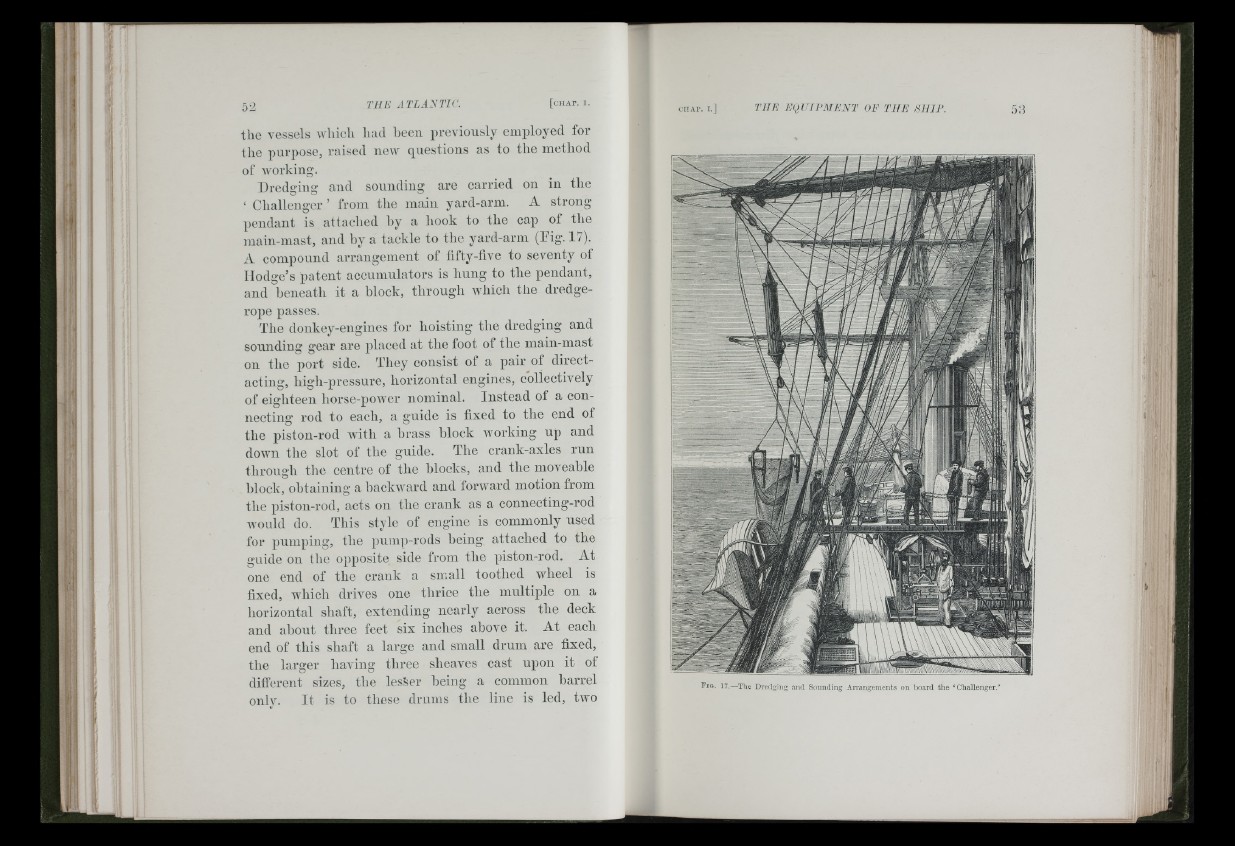
the vessels whicli luid been previously employed for
tbe purpose, raised new questions as to tbe metbod
of Avorking.
Dredging and sounding are carried on in tbe
‘ Cballenger ’ from tbe main yard-arm. A strong
pendant is attached by a book to tbe cap of tbe
main-mast, and by a tackle to tbe yard-arm (Dig. 17).
A compound arrangement of fifty-iive to seventy oi
Hodge’s patent accumulators is Imng to tbe pendant,
and beneath it a block, through wbicb tbe dredge-
rope passes.
Tbe donkey-engines for hoisting the dredging and
sounding gear are placed at the foot of the main-mast
on the port side. They consist of a pair of direct-
acting, high-pressure, horizontal engines, collectively
of eighteen horse-poAver nominal. Instead of a connecting
rod to each, a guide is fixed to the end of
the piston-rod Avith a brass block Avorking up and
doAAui the slot of the guide. The crank-axles run
through the centre of the blocks, and the moveable
block, obtaining a backward and forward motion from
the piston-rod, acts on the crank as a connecting-rod
Avould do. This style of engine is commonly used
for pumping, the pump-rods heing attached to the
guide on the opposite side from the piston-rod. At
one end of the crank a small toothed Avheel is
fixed, Avhich drives one thrice the multiple on a
horizontal shaft, extending nearly across the deck
and ahout three feet six inches above it. At each
end of this shaft a large and small drum are fixed,
the larger having three sheaves cast upon it of
different sizes, the lesSer heing a common barrel
onlv. It is to these drums the line is led, tAVO I,
F ig . 17,—The Dredging and Sounding Arrangements on board the ‘Challenger.’